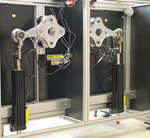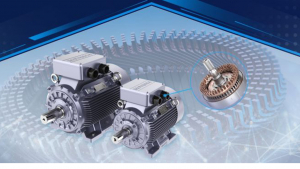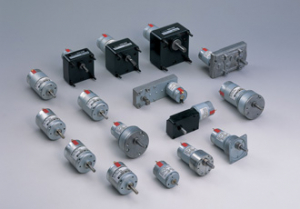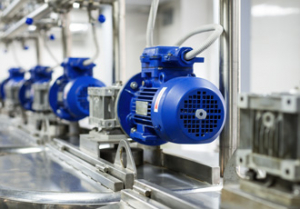Parker’s linear motor system provides long life solution for transmission line damper testing

The latest PowerRod linear motor system, from Parker Hannifin, is playing a vital role in a series of test machines for a new generation of spacer dampers designed for use on overhead power transmission lines. Developed and produced by UK-based systems house, Computer Controlled Solutions Ltd (CCS), for Tyco Electronics UK Ltd, the test machines use the PowerRod motors and Compax 3 servo drive to replace conventional motor and cam mechanisms, helping to minimise setup time and provide high levels of reliability during tests of twenty million cycles, equivalent to around 5,000 km of travel.
The spacer dampers are fitted to high voltage overhead transmission line conductors, used for long distance transmission of electricity at 400kV, from power stations to substations. Conductors are normally arranged in bundles of two, three or four lines, which have specific separations, maintained and protected from wind induced sub conductor oscillation energy by spacer dampers. Spacer dampers protect the lines cables from wear and premature fatigue failures, maintaining electrical and mechanical performance during onerous climatic extremes and system faults.
The new generation of Quad and Triple Spacer Dampers are undergoing development by Tyco Electronics and will form part of a long term programme to upgrade the UK power transmission network over the next decade. Paul Riley, Managing Director of CCS, explains, “These new spacer dampers will offer both a longer service life than those currently in use and enhanced performance, in terms of their ability to withstand Aeolian Vibration, wear and climatic extremes. A key service requirement, however, is their ability to offer an operating life of at least twenty five years, without maintenance or loss of performance”.
The semi-conductive spacer dampers are constructed from aluminium alloy, which, in the case of the Quad versions, have four connection arms. Each of these is linked via a specially designed frame with the arm arrangement incorporating elastomer damping elements. These attach to each sub-conductor maintaining, for example, a 500mm separation.
The reliability of the spacer damper, in particular the performance of the elastomer damping elements, is therefore crucial to the continuous safe and efficient operation of transmission lines. The spacer dampers have to provide sufficient flexibility to allow the conductors to move due to effects of wind, including expansion and contraction during extreme weather, while controlling and reducing the effects of wind energy. This includes a phenomenon know as Aeolian Vibration, which is caused by streams of air flowing over the surface of each conductor, creating vortex shedding, (wind flow disturbance) that results in the downwind cable vibrating.
The test rigs developed by CCS are primarily designed to prove the performance and operating life of the elastomer damping elements, effectively moving each pivot arm though a predetermined series of cycles. These include a deflection test, to ensure that the arm will not deviate beyond specific angular displacements, for example, 12º either side of its neutral position; deflection forces are initially 325N, followed by continuous flexing at 260N peak, with a return to the maximum load at intermittent intervals at frequencies between 1 and 5 Hz. These tests are repeated for up to 20 million cycles, which is the equivalent of over 25 years in service.
Paul Riley says that, “In the past, test rigs for similar applications tended to use an AC motor, cam shaft and various bearings to test each damper. The problem with this arrangement was that it was noisy and consisted of multiple components, so the potential for mechanical wear and failure was high; it was also difficult to change applied forces without lengthy adjustments to the cam settings. We therefore chose to develop our solution around Parker’s PowerRod PRA linear motor and Compax 3 servo drive solution. This provides a simple, compact and extremely efficient system that is virtually silent and enables us easily to adjust the applied force. Perhaps as importantly, the PowerRod motor is supplied as an integrated system, complete with encoder, so we don’t need to add additional measurement devices, while the Compax 3 interfaces with a PC, via a standard National Instruments’ card, so that we can easily control all settings on each test rig; for example, we can cycle each PowerRod unit between 1 and 5Hz, depending on the unit being tested, which equates to a test time of 46 days at maximum speed, and interrupt and restart each test if required”.
Paul also points out, “The PowerRod linear motor system is extremely accurate, enabling us to ensure that applied loads are repeatable within tight parameters, and is capable of continuous operation for extended periods, often equating to many thousands of kilometres of travel, without maintenance. In addition, we worked closely with Parker to develop the test rigs and they have provided a wealth of technical knowledge and support that has enabled us to maximise the performance and functionality of the PowerRod system”.
Similar articles
More from Parker Hannifin
- Flange system gains new certification for marine applications 4th June 2021
- New generation of oil condition monitoring technology 2nd June 2021
- Parker introduces new low GWP refrigeration dryer series 24th November 2020
- Steering into the future for mobile machinery 17th November 2020












Write a comment
No comments